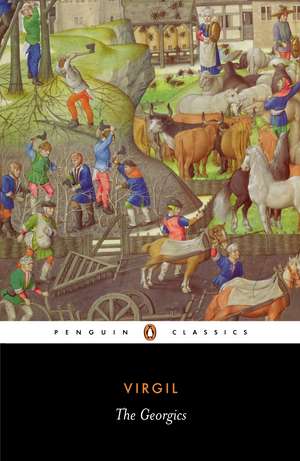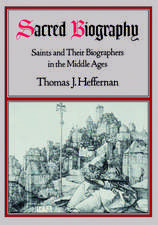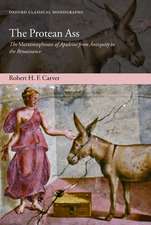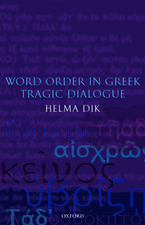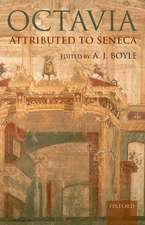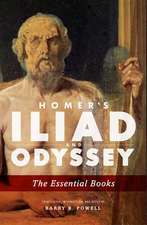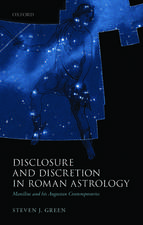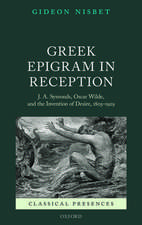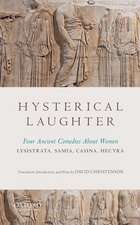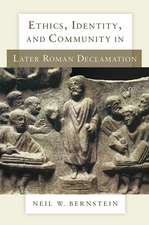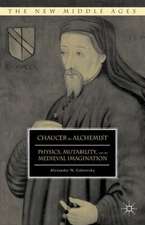The Georgics
Autor Virgil Betty Radice Introducere de L. Wilkinsonen Limba Engleză Paperback – 24 noi 1982
| Toate formatele și edițiile | Preț | Express |
|---|---|---|
| Paperback (15) | 32.73 lei 3-5 săpt. | |
| Mint Editions – apr 2021 | 32.73 lei 3-5 săpt. | |
| CREATESPACE – | 46.41 lei 3-5 săpt. | |
| CreateSpace Independent Publishing Platform – | 49.07 lei 3-5 săpt. | |
| CreateSpace Independent Publishing Platform – | 50.44 lei 3-5 săpt. | |
| OUP OXFORD – 26 feb 2009 | 51.19 lei 10-17 zile | +15.76 lei 6-12 zile |
| Penguin Books – 24 noi 2010 | 79.20 lei 3-5 săpt. | +9.43 lei 6-12 zile |
| Penguin Books – 24 noi 1982 | 80.72 lei 3-5 săpt. | +5.08 lei 6-12 zile |
| CREATESPACE – | 93.30 lei 3-5 săpt. | |
| Hackett Publishing Company, In – 14 mar 2002 | 93.58 lei 3-5 săpt. | |
| CreateSpace Independent Publishing Platform – | 62.08 lei 6-8 săpt. | |
| Book Jungle – 17 apr 2008 | 90.24 lei 6-8 săpt. | |
| Devoted Publishing – 28 noi 2016 | 98.16 lei 6-8 săpt. | |
| TREDITION CLASSICS – 31 oct 2011 | 109.33 lei 6-8 săpt. | |
| Blurb – 10 feb 2019 | 119.53 lei 38-45 zile | |
| Clarendon Press – 21 apr 1994 | 253.59 lei 31-38 zile | +103.44 lei 6-12 zile |
| Hardback (1) | 263.30 lei 3-5 săpt. | |
| Hackett Publishing Company – 15 mar 2002 | 263.30 lei 3-5 săpt. |
Preț: 80.72 lei
Nou
Puncte Express: 121
Preț estimativ în valută:
15.45€ • 16.11$ • 12.84£
15.45€ • 16.11$ • 12.84£
Carte disponibilă
Livrare economică 28 februarie-14 martie
Livrare express 13-19 februarie pentru 15.07 lei
Preluare comenzi: 021 569.72.76
Specificații
ISBN-13: 9780140444148
ISBN-10: 0140444149
Pagini: 160
Ilustrații: bibliography
Dimensiuni: 129 x 198 x 9 mm
Greutate: 0.12 kg
Editura: Penguin Books
Colecția Penguin Classics
Locul publicării:London, United Kingdom
ISBN-10: 0140444149
Pagini: 160
Ilustrații: bibliography
Dimensiuni: 129 x 198 x 9 mm
Greutate: 0.12 kg
Editura: Penguin Books
Colecția Penguin Classics
Locul publicării:London, United Kingdom
Notă biografică
Descriere scurtă
Recenzii
Chew's translation is, both in aesthetic and scholarly terms, an excellent piece of work. I find her approach refreshing and true to the spirit of the Georgics ; her adventurousness strikes me as just the thing to rescue the poem from the appearance of blandness that a more straightforward style of translationese would inevitably, but misleadingly, impose upon it. This Georgics does not read much like any previous version of it. Chew helps the English reader to get a sense of Virgil's avant-garde poetics, which is the main thing that almost all translators of the Georgics work to eliminate, if indeed they are even aware of it. First-rate. --Joseph Farrell, Professor of Classical Studies, University of Pennsylvania
This is a translation with a difference, intended for readers without Latin. The most striking feature is the use of variations of type and layout. . . . Invocations are set out like memorial inscriptions; tasks or points to look for in animals come in the form of numbered or bulleted lists, assembling a plough reads like an instruction manual. Similes appear in italics, but so do the key words in some descriptive passages. The positioning of the text is used to illustrate the meaning of a quincunx, terracing, or the flight of a swarm of bees. These innovations serve to distinguish between what might be termed the poetry and the practical. Explanations are sometimes incorporated into the translation, which is in free verse, but mostly these are in the generous footnotes. . . . Chew has done considerable research into ancient and modern methods of husbandry and the notes concentrate on agriculture, astronomy, and botany. . . . Some [renderings] are particularly apt: 'the cicadas' complaining plainsong bursts the strawberry trees' for 'cantu querulae rumpent arbusta cicadae;' 'the murmur of the groves grows and grows' for 'et nemorum increbescere murmur.' . . . Chew should certainly achieve her aim of bringing the work to a wider readership. As she claims in her Introduction, 'Plain and simple, it is an American Georgics .' _--Anne Haward, The Joint Association of Classical Teachers Review
My graduate seminar members and I enjoyed Dr. Chew's rendering of the Georgics immensely. We were delighted and instructed by her playful blend of argots and typefaces, and by her artful blend of information in the notes. This translation opened the poem for me all over again--and it has long been among my favorites. Chew's translation offers a dazzling survey of musical styles in the poem. The fifteen of us send our thanks for her provocative and delightful achievement. ---Thomas A. Goodmann, University of Miami
This is a translation with a difference, intended for readers without Latin. The most striking feature is the use of variations of type and layout. . . . Invocations are set out like memorial inscriptions; tasks or points to look for in animals come in the form of numbered or bulleted lists, assembling a plough reads like an instruction manual. Similes appear in italics, but so do the key words in some descriptive passages. The positioning of the text is used to illustrate the meaning of a quincunx, terracing, or the flight of a swarm of bees. These innovations serve to distinguish between what might be termed the poetry and the practical. Explanations are sometimes incorporated into the translation, which is in free verse, but mostly these are in the generous footnotes. . . . Chew has done considerable research into ancient and modern methods of husbandry and the notes concentrate on agriculture, astronomy, and botany. . . . Some [renderings] are particularly apt: 'the cicadas' complaining plainsong bursts the strawberry trees' for 'cantu querulae rumpent arbusta cicadae;' 'the murmur of the groves grows and grows' for 'et nemorum increbescere murmur.' . . . Chew should certainly achieve her aim of bringing the work to a wider readership. As she claims in her Introduction, 'Plain and simple, it is an American Georgics .' _--Anne Haward, The Joint Association of Classical Teachers Review
My graduate seminar members and I enjoyed Dr. Chew's rendering of the Georgics immensely. We were delighted and instructed by her playful blend of argots and typefaces, and by her artful blend of information in the notes. This translation opened the poem for me all over again--and it has long been among my favorites. Chew's translation offers a dazzling survey of musical styles in the poem. The fifteen of us send our thanks for her provocative and delightful achievement. ---Thomas A. Goodmann, University of Miami
